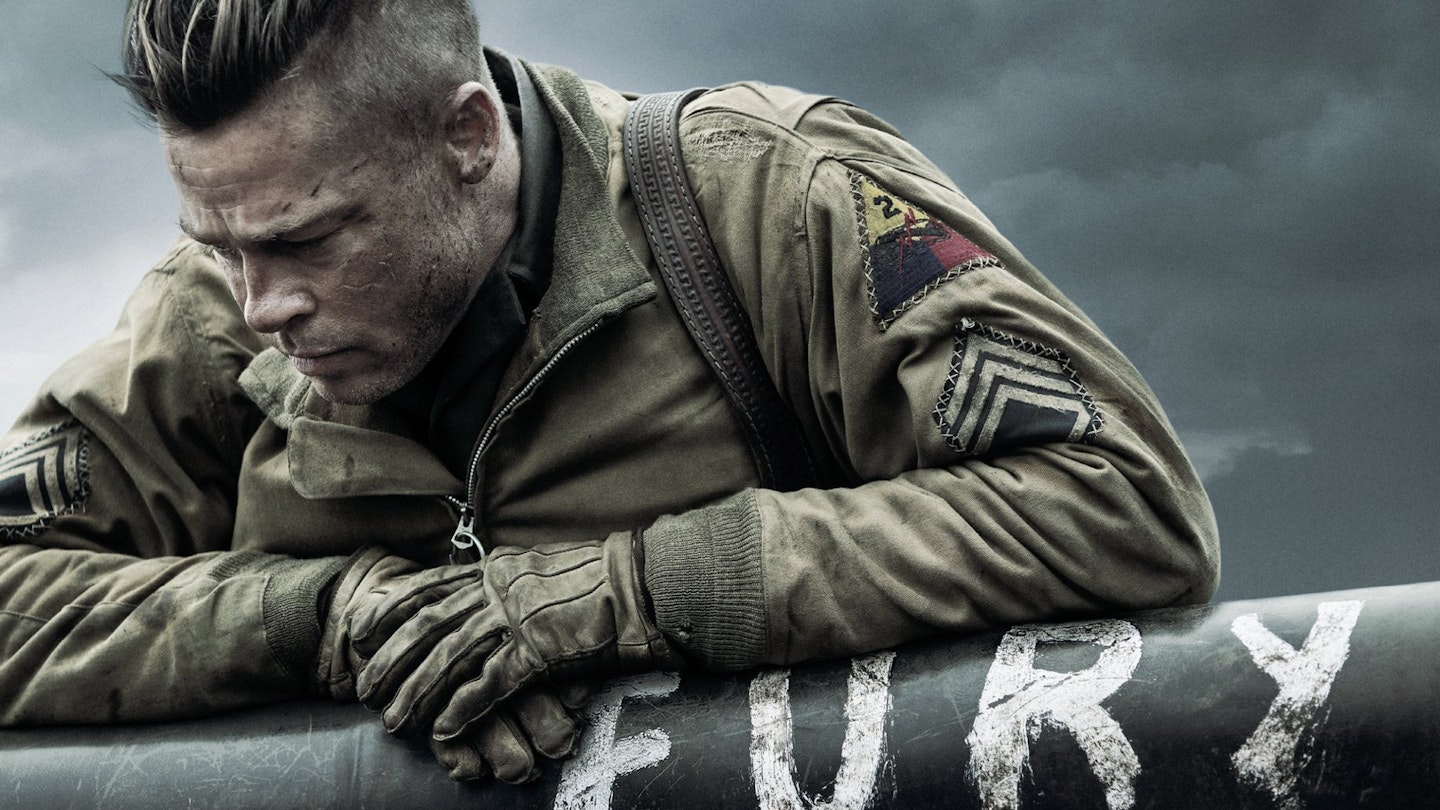As Brad Pitt tank flick Fury proves, war films have changed plenty since Saving Private Ryan introduced Dale Dye boot camps and the handheld fury of realistic combat. Gone are the boy’s own adventures of the ‘50s and ‘60s, replaced with unsparingly brutal recreations that are historically accurate to the nth degree. This is good news if you happen to have ‘Panzer Consultant’ on your business card, but raises the bar for anyone looking to tackle World War II in the future. But which movies currently offer the most accurate look at the war itself? We’ve gone campaign by campaign to highlight the films to search out on the subject. There’s bad news for Von Ryan’s Express fans…
The eastern front
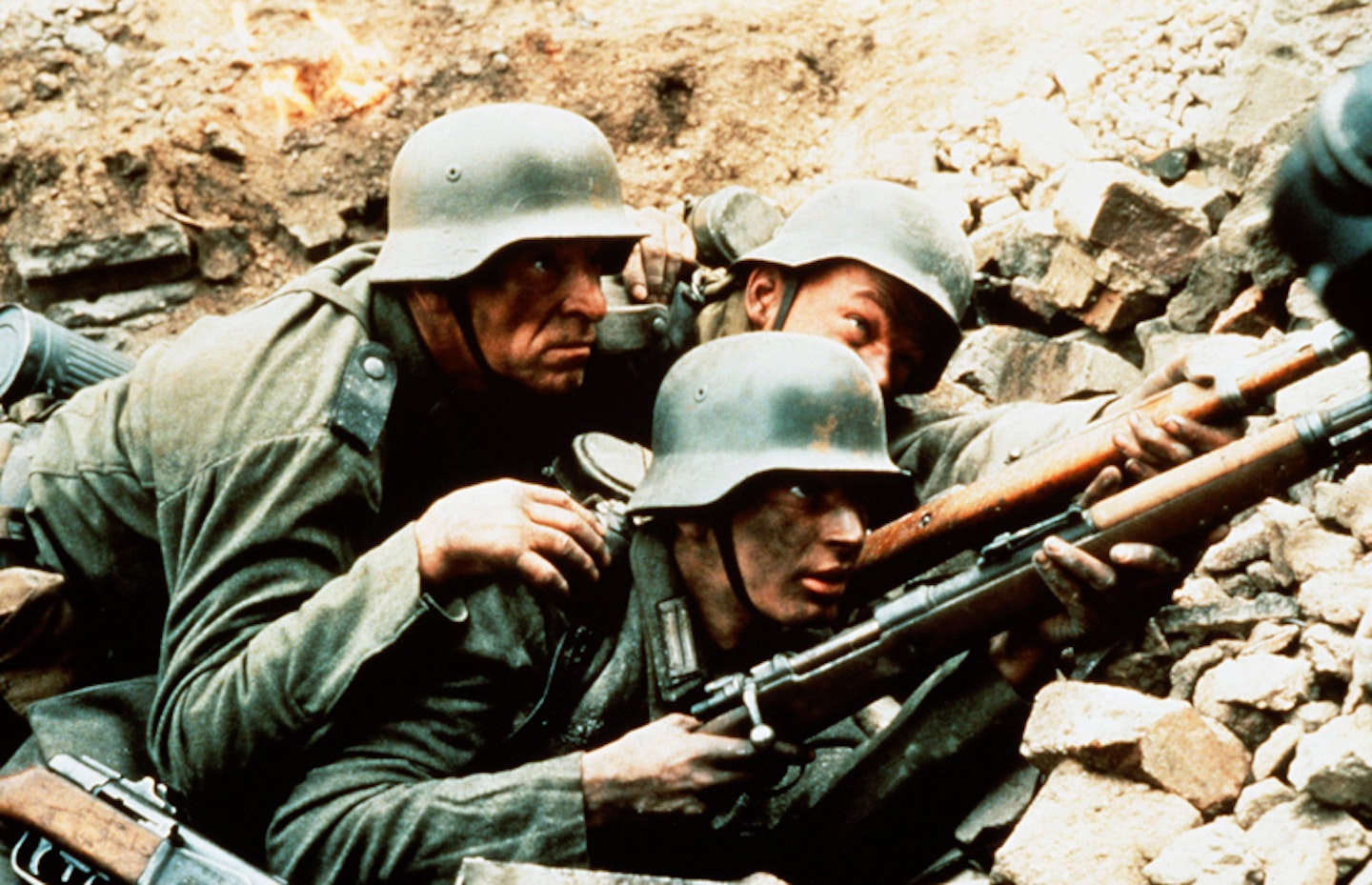
Military historians will tell you that the “Ostfront” was where World War II was won and lost, and no-one who wears tweed for a living makes this kind of stuff up. Aside from a few summery days in 1941, it was Russia that was doing most of the winning – although amid the slaughter it was often pretty hard to tell. The German army went into the key battle – Stalingrad – with 300,000 men and 500 tanks, emerging six months later with about five men and a small van. There’s been a Hollywood version of the battle (Enemy At The Gates) and a recent Russian one (in 3D!) but only the German take, Stalingrad (1993) (above), is worth searching out. Needless to say, it’s not exactly jolly viewing – one T-34 assault is teeth-grindingly fierce – but it offers a realistic vision of the battle’s hand-to-hand, factory-by-factory clashes, and its traumatic impact on the combatants. As a bonus, there’s no romantic subplot involving Jude Law. The Wehrmacht’s post-Stalingrad retreat and slow disintegration, meanwhile, is best captured (and often in slow-mo) by Sam Peckinpah’s Cross Of Iron (1977).

Elem Klimov’s masterpiece, Come And See (1985) (above), captures the partisan war like some kind of terrible hallucination – could this *really *be happening, it seems to ask – with its lens capturing sudden horrors seemingly too great for the camera to linger on. A pile of bodies stacked against a cabin like firewood. A Nazi fashioned from mud and sticks like bonfire night at Satan’s house. Planes circling overhead like buzzards. A church burnt to the ground. This is not, in short, a film to double-bill with How To Lose A Guy In 10 Days. But Come And See’s impressionist style shouldn’t mask a horribly high degree of historical accuracy. As Klimov’s end credits point out, SS Einsatzkommandos incinerated 628 entire Belorussian villages during the war. Even that Scare-Nazi can’t match the real thing for sheer horror.
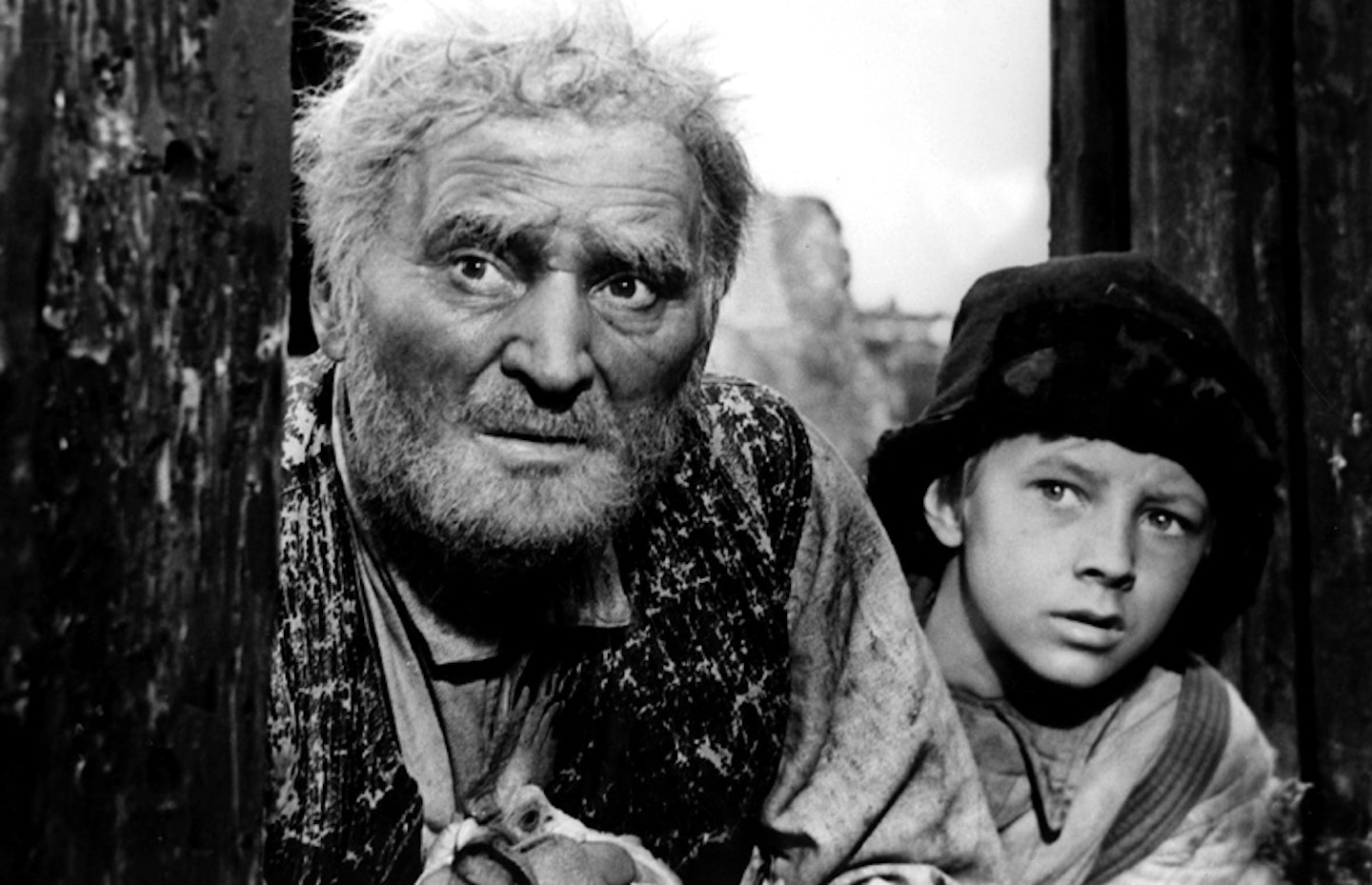
The homefront and combat zones are usually separated by at least one ocean in British war films – Battle Of Britain and The Eagle Has Landed aside – but in the Soviet Union there was little to divide combatants and civilians. So Palme d’Or winner The Cranes Are Flying (1958) takes us from the front line to the streets of a Russian city under siege and back again, as heroine Tatiana Samoilova lives, loves and endures the bombs falling around her. Russia’s perspective on its Great Patriotic War has yielded some stonkingly one-eyed works of warpaganda but this isn’t one of them, and neither is Andrei Tarkovsky’s Ivan’s Childhood (1962) (above), which is set in a swampy no-man’s land between German and Russia lines somewhere on the Eastern Front. Likewise, Ballad Of A Soldier (1959), which shows the experience of combat through the eyes of one young infantryman, is well worth tracking down.
The homefront

Aside from Dad’s Army, the best snapshot of the greying Home Guard in action is Powell and Pressburger’s The Life And Death Of Colonel Blimp (1943) (above). It’s a bit like Red, only really, really good and with Roger Livesey instead of Bruce Willis. (So not like Red at all, then.) Life in Britain during the Blitz is depicted beautifully in William Wyler’s Mrs. Miniver (1942). Shot in Los Angeles by a German-born director with a multinational cast, it somehow nailed the spirit of a defiant people in a way that still feels moving and unclichéd 70 years later. John Boorman’s Hope And Glory (1987) does a similar job, albeit with the more boyish outlook you’d expect from a film based on the writer/director’s own wartime childhood. Its long-gestating sequel Queen And Country picks up with the characters in the post-war years.
The air war

The legend of plucky RAF airmen knocking down Jerry flyers before heading to the pub is at odds with the reality of the Battle Of Britain. For a time, the air battle over the English countryside hung in the balance with Luftwaffe mass slowly exhausting the nimble but dwindling band of defenders. It was, in the words of the Chav Pilots. For the story of the Czech (and Polish) pilots who made such a big contribution to ‘The Few’, hunt out 2001’s Dark Blue World{
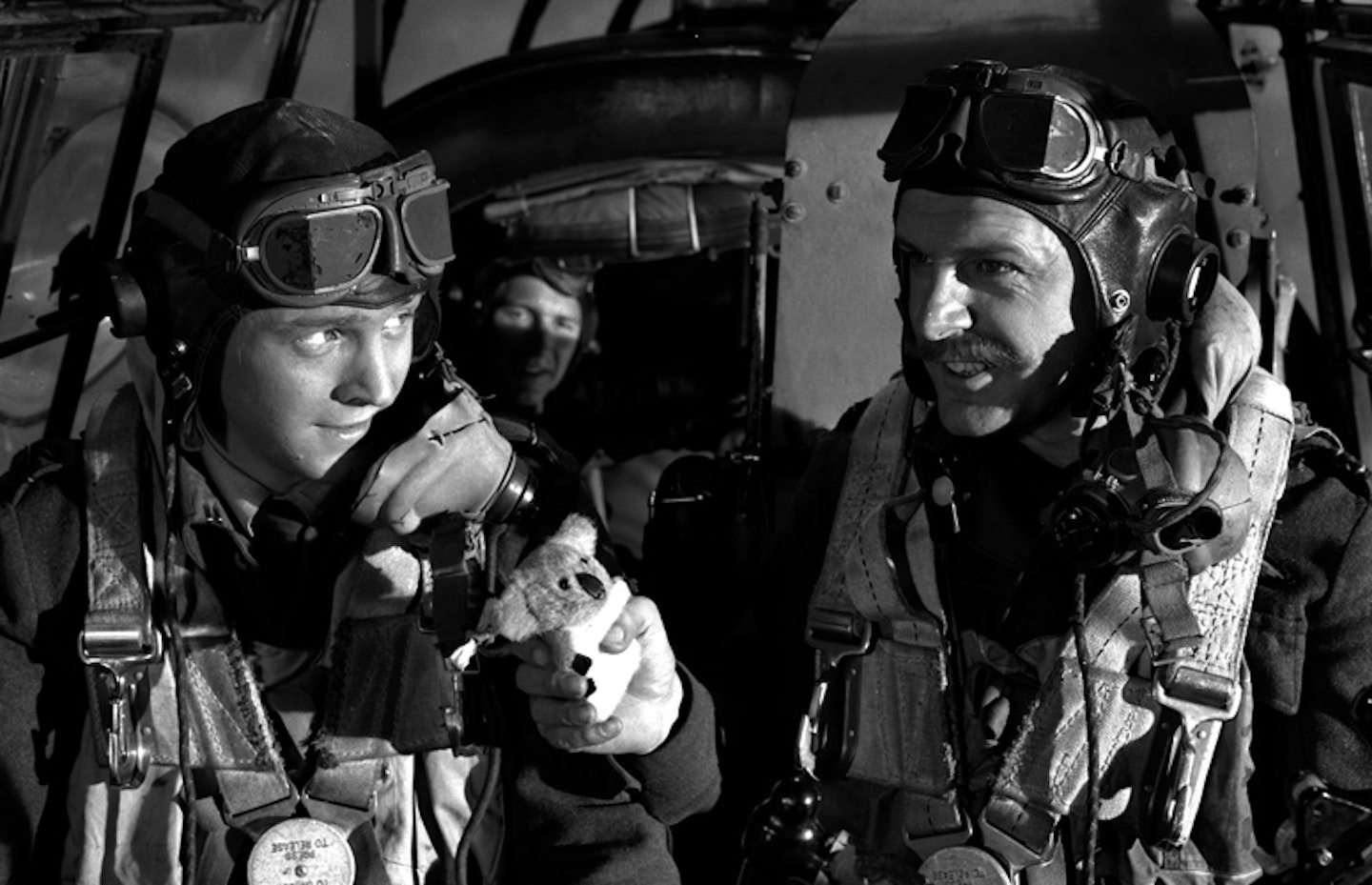
Depictions of Bomber Command and the USAAF’s bombing campaigns against Germany have tried to sugar its terrible cost with something approaching an upbeat treatment. Considering nearly half the airmen that flew died, they’ve had a job with that. This is why, despite sounding like it might be an MGM musical, Memphis Belle actually straps the viewer in and plunges through the shrapnel-laced skies over Germany through which US Flying Fortresses had to lumber. Less glossy but equally unsparing of the terrifying life of the bomber pilot is The Dam Busters (1954) (above). It’s inspired beer ads and plenty of boy’s own daydreams but the cold reality of the raid on the Ruhr dams was that eight of the 19 RAF bombers that took part were shot down. This fact isn’t neglected amid the derring-do.
The battle of the Atlantic
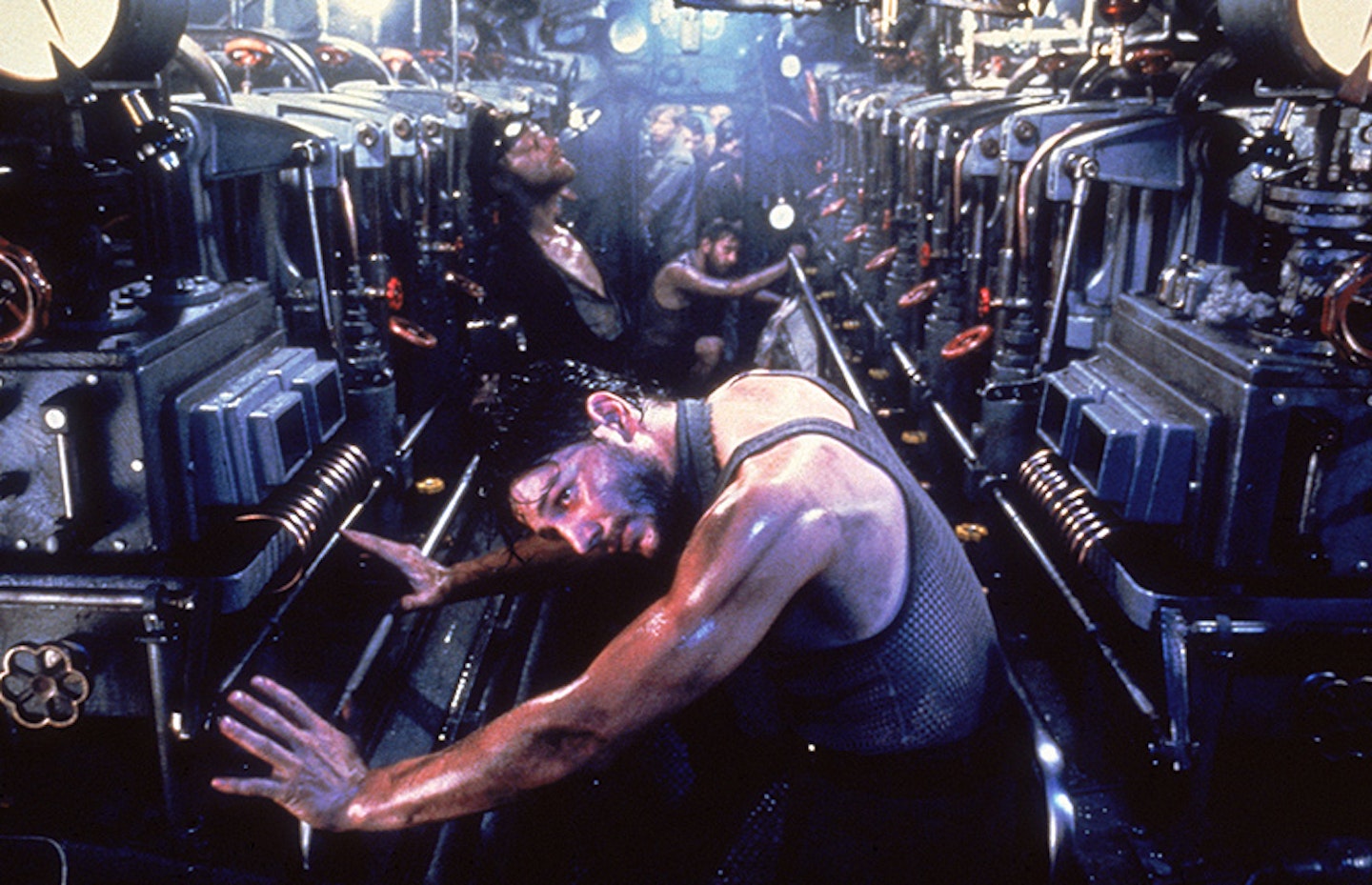
Wolfgang Petersen’s Das Boot (1981) (above) is, of course, one of the finest men-in-peril movies this side of Predator. It’s also a damn fine piece of history, based as it is on U-boat veteran Lothar-Günther Buchheim’s wartime experiences and with two other veterans (including submarine ace Heinrich Lehmann-Willenbrock) acting as consultants during the shoot. It’s October 1941 when U-96 slips berth in La Rochelle, stocked full of provisions like a Nazi-run branch of Whole Foods, and heads into Atlantic convoy lanes. At this point, America is yet to join the war and the bright lights of the East Coast helpfully silhouette Allied shipping for the U-boats lingering in the shallows. But the so-called ‘Happy Time’ of easy kills is over. Allied convoys are a tougher nut to crack and, as the film depicts, escorting destroyers and corvettes are a terrifying threat to Jürgen Prochnow and his crew. Up on the surface, meanwhile, the Nicholas Monsarrat-penned tale The Cruel Sea (1953) has also aged well, with Jack Hawkins, Donald Sinden, Stanley Baker and a young Denholm Elliott manning a rust bucket corvette against the U-boat menace. Like Buchheim, Monsarrat experienced all this first hand and it feels so real, you can taste the sea spray.
The invasion of Normandy and Operation Market Garden
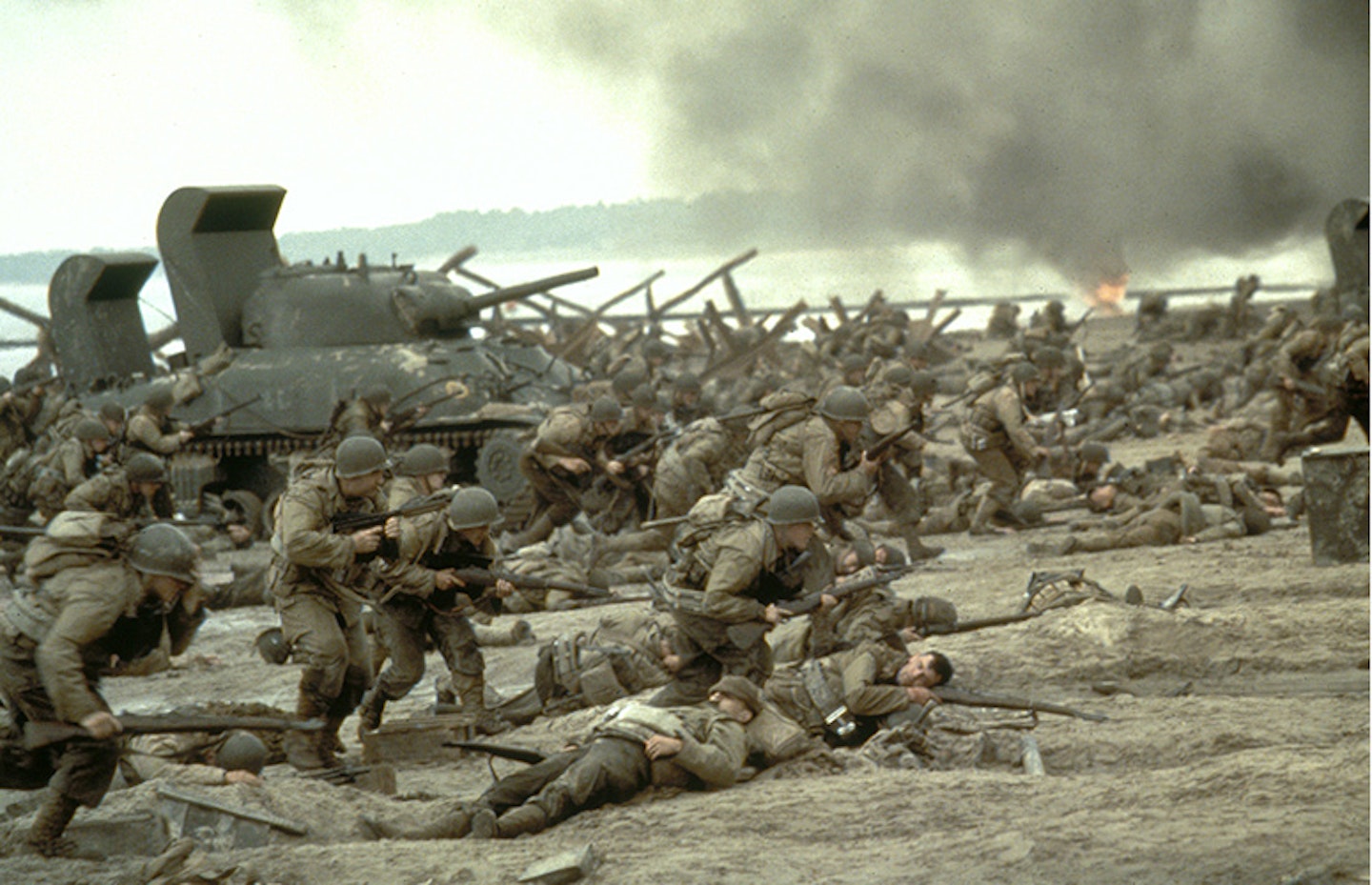
Saving Private Ryan (above) recalibrated the whole notion of what a war film should be. If the Germans used Tiger tanks and half-tracks, Steven Spielberg used Tiger tanks and half-tracks, and to hell with the budget. Uniforms and material could no longer be sourced from the store cupboards of whatever army was nearest, and this onus on accuracy has influenced most World War II depictions since. Compare and contrast, for instance, 1965’s Battle Of The Bulge (the US tanks are American and, wait, so are the German ones!) with the Bastogne sequences of Band Of Brothers; or the respective tank battles in Fury and Patton. Worthy exceptions – especially for those who found Private Ryan too US-centric – are Overlord (1975) and Darryl Zanuck’s The Longest Day (1962), which visualises Cornelius Ryan’s account of June 6, 1944 through the multinational eyes of its generals (Eisenhower, Bradley, Rommel, etc) and foot soldiers alike. Look out for Richard Todd, an actual D-Day veteran, storming Pegasus Bridge in an audacious turtleneck as Major John Howard with Sean Connery’s humble tommy cracking wise behind him.
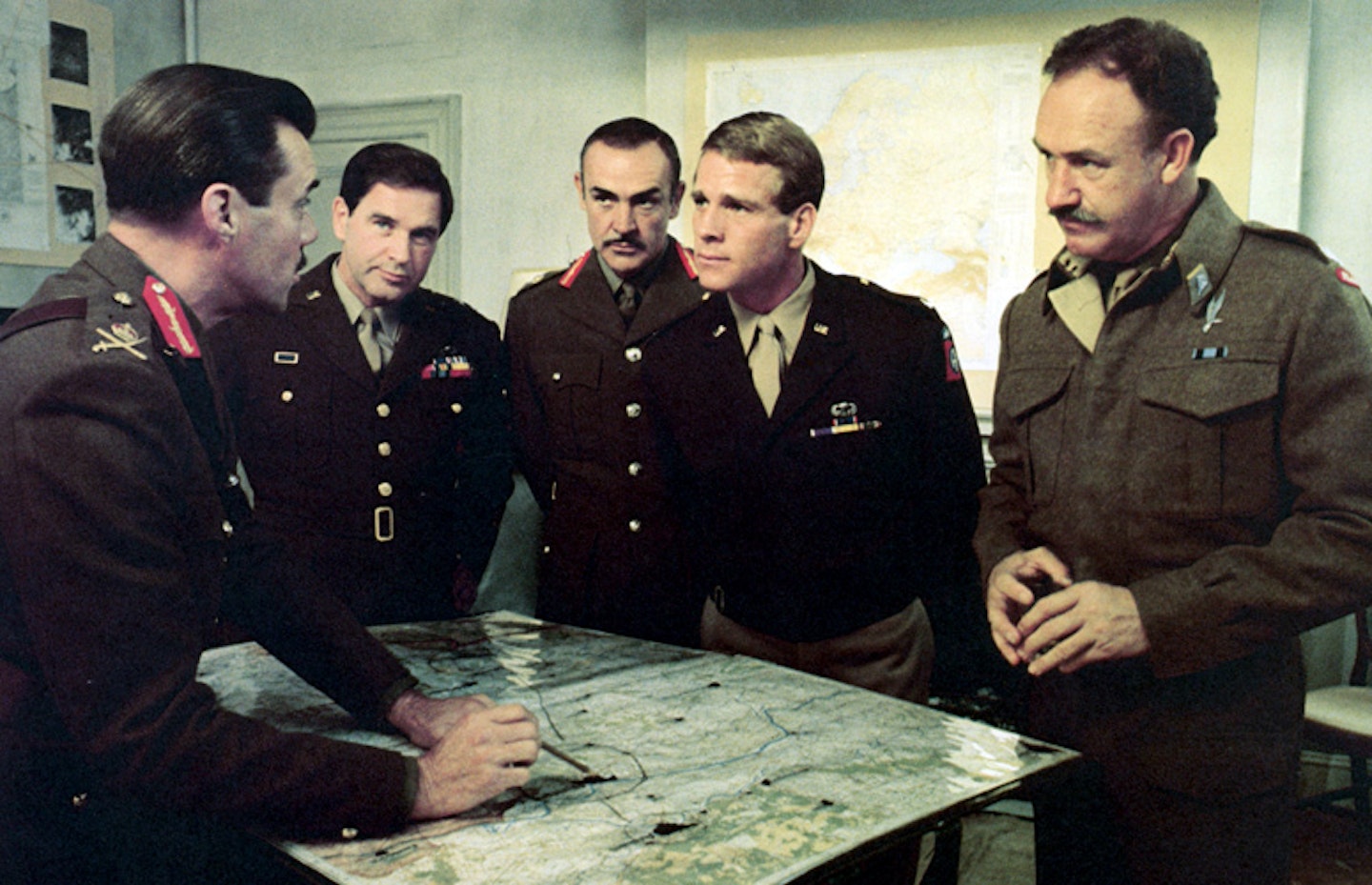
Another Cornelius Ryan joint, A Bridge Too Far (1977) (above) offers an epic telling of 1944’s disastrous Operation Market Garden – an airborne armada designed to seize key river bridges for the pursuing Allied armour to cross – that’s perhaps a greater feat of logistics than it is cinema by Richard Attenborough. Nonetheless, as a piece of history it stands scrutiny. Amid the distracting star turns by the likes of Redford, Hackman, Hopkins, Bogarde, Caan, Olivier – sod it, everyone is in this film – the scale and spirit of Field Marshal Montgomery’s great misadventure is laid bare. Even Michael Caine and Edward Fox – we weren’t kidding about the cast – can’t get XXX Corps more than a mile down a single-lane highway before the offensive gets bogged down. Copping it down the road, meanwhile, are the Paras, clinging on in the rubble of Arnhem. William Goldman’s script doesn’t spare us the full weight of the defeat. Hard to see this one getting made nowadays.

The Big Red One (1980) – another Fury touchpoint – has Sam Fuller’s autobiographical stamp as he revisits the US 1st Infantry Division campaigns he participated in. Starting with the outfit trying to figure out which side the French are on in Tunisia’s Operation Torch and ending up in a Nazi concentration camp, it’s a journey through the entire Western Front as seen by the American G.I. that’s a handy companion piece with Days Of Glory (2006) (above). Rachid Bouchareb’s movie tells a similar tale from the point of view of Algerians serving in Italy with the Free French Army, throwing in the still-not-fully resolved issue of discrimination by the French government.
The Pacific war
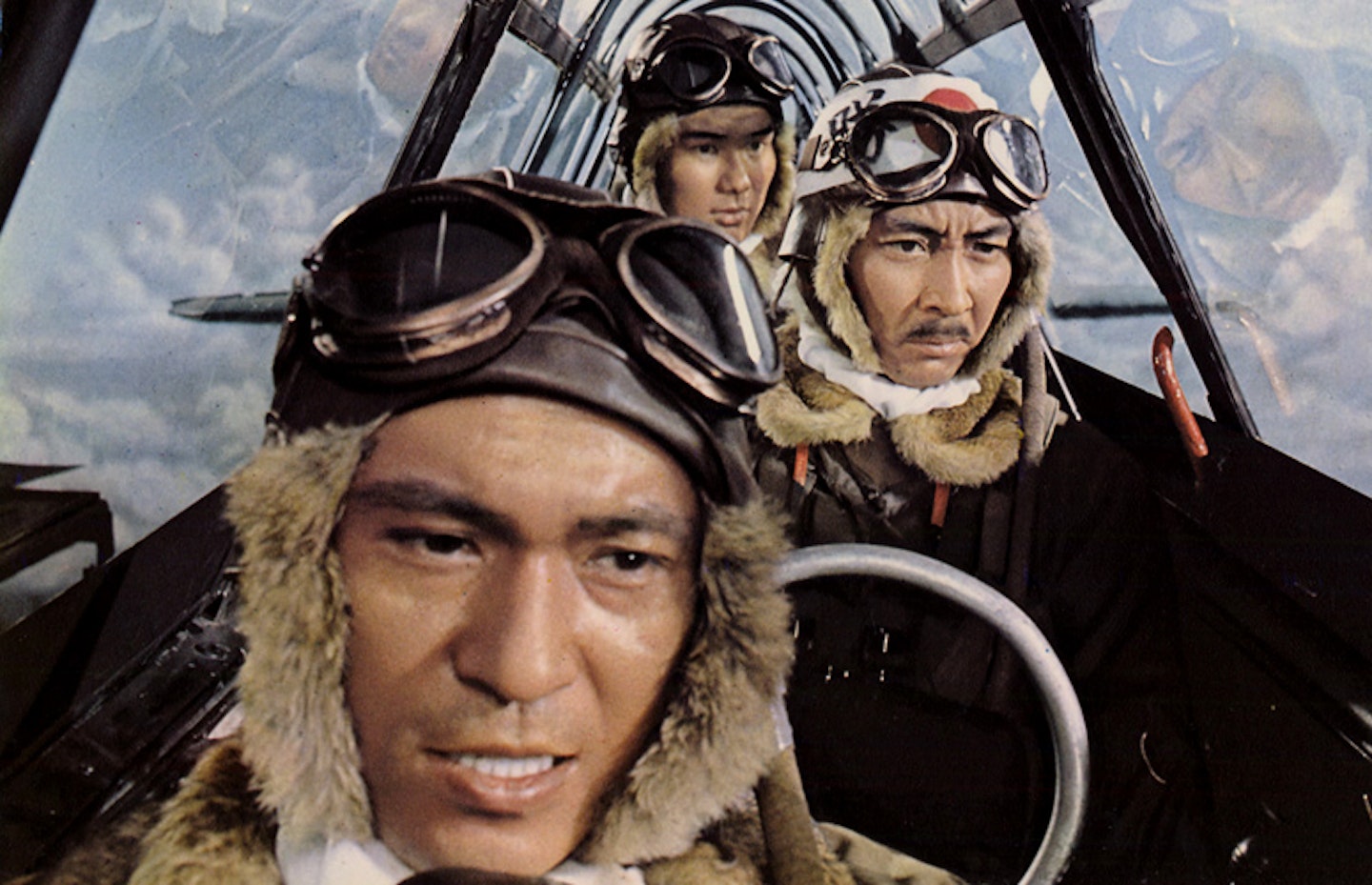
Forget Pearl Harbor – a film that will live in infamy – because if you want to make sense of the Japanese air attack on Honolulu, Tora! Tora! Tora! (1970) (above) is the most accurate, unshowy recreation. Don’t expect massive thrills – “one of the deadest, dullest blockbusters ever made," yawned Roger Ebert – but at least there’s an attempt to make sense of the complex build-up to the attack (who let it happen? What did the Japanese hope to achieve? Where’s Steve Rogers when you need him?), a subject of enduring controversy, and an impressive number of replica Japanese planes to liven up the climactic assault. Re-using some of those planes, Midway (1976) suffers a little from Battle Of Britain syndrome as big stars Say Important Things To Each Other but still does a decent job of recreating the knife-edged carrier battle that waged in the middle of the Pacific for three days in June 1942.
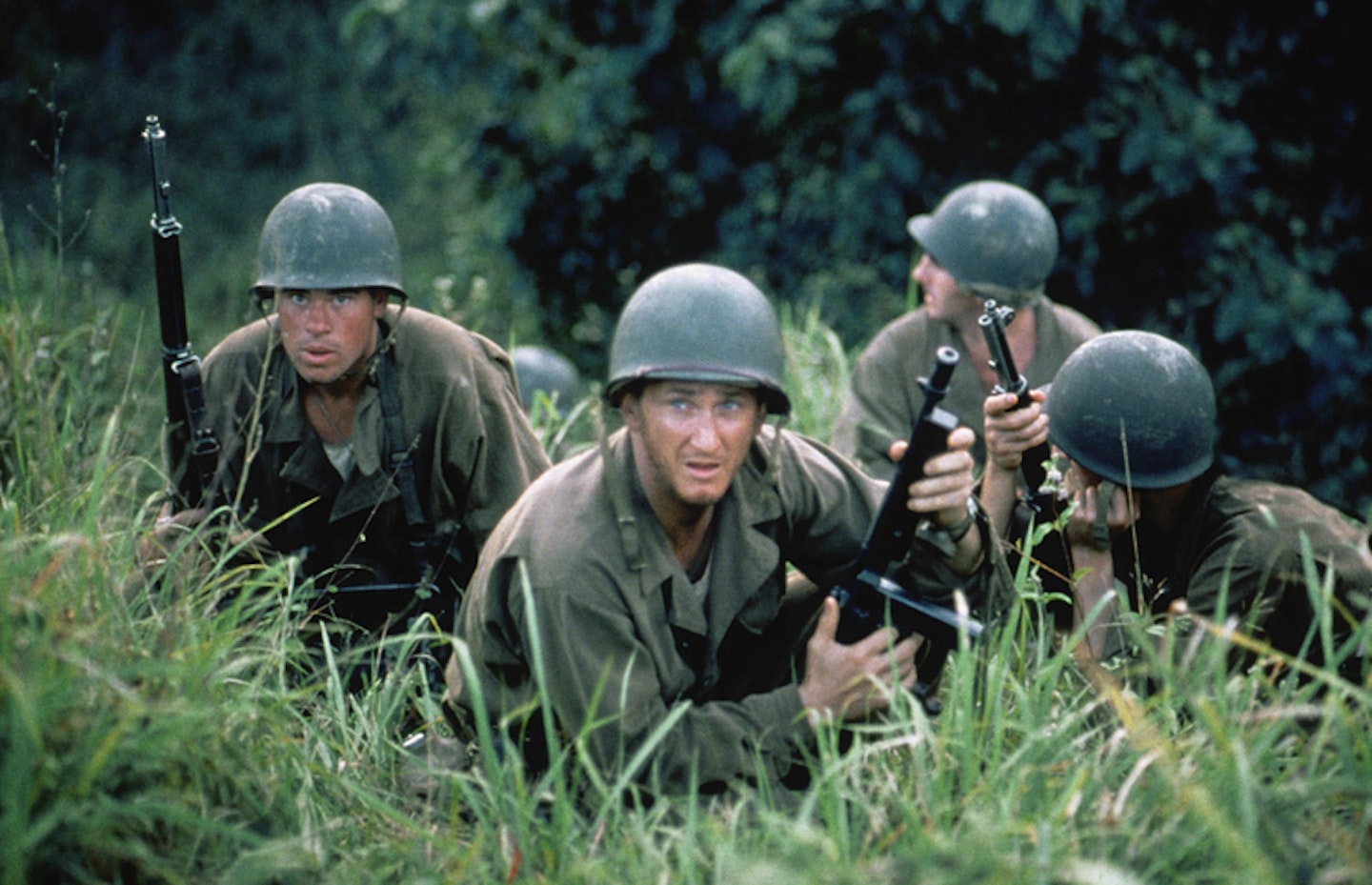
The vicious island hopping campaign by US Marine Corps is better depicted in Clint Eastwood’s Letters From Iwo Jima and Flags Of Our Fathers (both 2006) than John Wayne’s Sands Of Iwo Jima (1949), although all three films capture its essence: lots of people go to the beach and have a rather terrible time. Terrence Malick offers a bird’s eye (literally) view of the campaign for Guadalcanal three years earlier in the masterful The Thin Red Line (1998) (above). Despite Malick’s preoccupations with big themes (Love! Mortality! Parrots!), his take on James ‘From Here To Eternity’ Jones’s novel doesn’t totally jettison Jones’s own combat memories. The Japanese are an elusive, almost spiritual foe as the American forces strive to take Henderson Field and establish an airbase in the Solomon Islands. For more on this battle, episodes two and three of HBO’s The Pacific (2010) is where to look.

Finally, John Ford’s They Were Expendable (1945) (above) is one of the John Wayne efforts (of quite a few) to get close to the early realities of war against Japan. Wayne plays a PT boat commander called ‘Rusty’ Ryan who’s facing heavy losses and falling morale in the Philippines. The general misery of the Philippines campaign is also neatly encapsulated by Fires On The Plain (1959), a Japanese war drama in which a Japanese soldier struggles to survive in the face of defeat, tuberculosis and superior officers who keep trying to get him to commit suicide. And you thought you were having a bad day...
Resistance
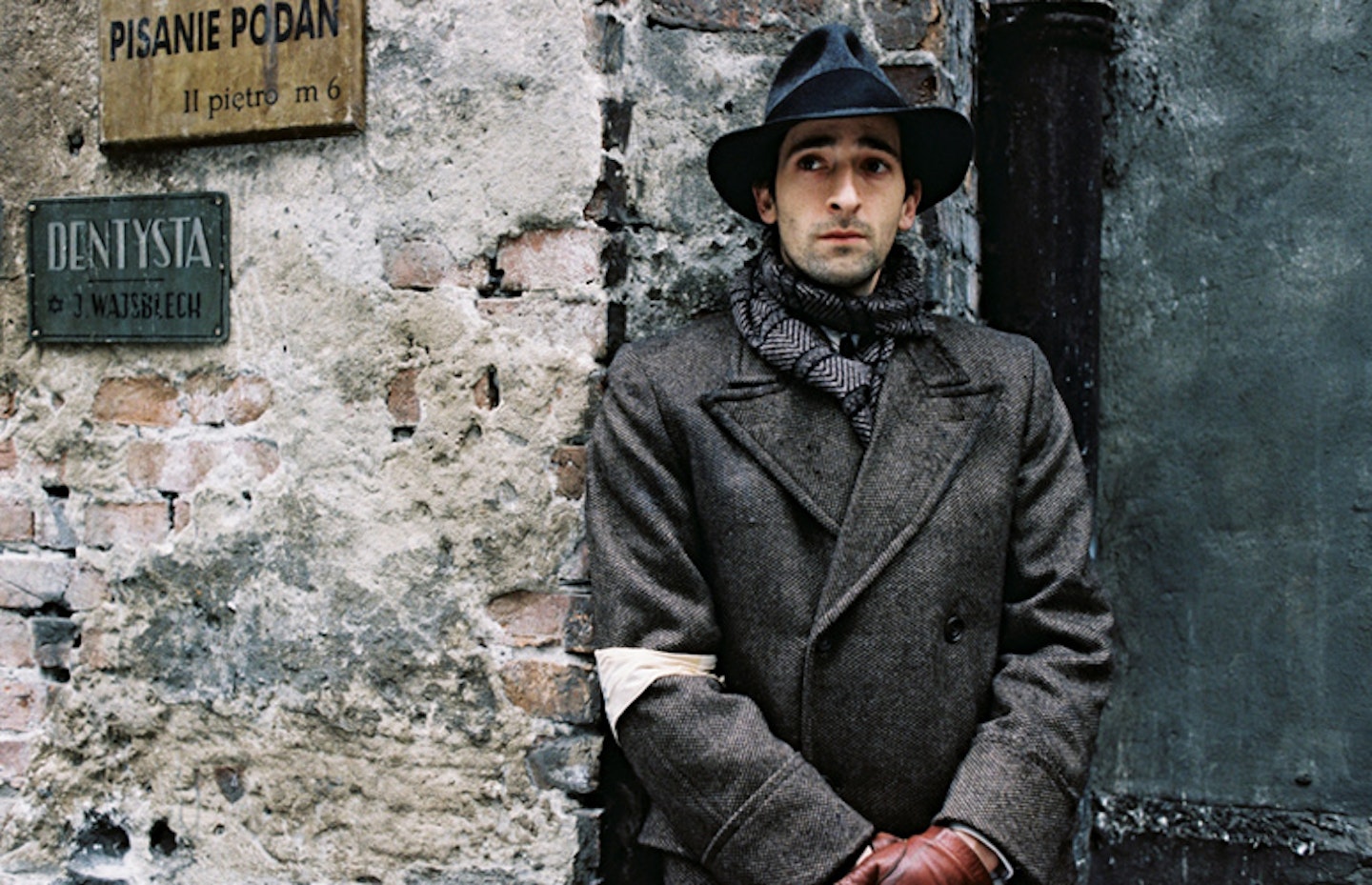
The many stories of occupation and resistance to the Nazi jackboot (the Nazis very rarely wore slip-ons) has probably yielded more classic films than any other aspect of the war. The Warsaw Uprising of 1944 is best represented Andrzej Wajda’s Kanal (1957), although Roman Polanski’s The Pianist (above) offers a glimpse of its brutal conclusion through the eyes of Adrien Brody’s Jewish hideaway, Wladyslaw Szpilman. The French Resistance, meanwhile, can boast Robert Bresson’s influential A Man Escaped (1956) and Resistance veteran Jean-Pierre Melville’s Army Of Shadows (1969), a Maquis classic in the raincoat-and-homburg garb of a crime thriller. More hardboiled than Inglourious Basterds and more historically accurate than Escape To Victory, it’s a masterpiece of tension and moral complexity and inspired 2009 kinda-homage, Army Of Crime. The other side of occupation – collaboration – is tackled by Louis Malle’s Lacombe, Lucien (1974), while Paul Verhoeven also touches on the devil’s pact forged between occupier and occupied in Black Book (2006). Check out the Dutchman’s earlier Soldier Of Orange (1977) for another edgy take on the tangled web of loyalties in the Netherlands' wartime underground.
The Holocaust
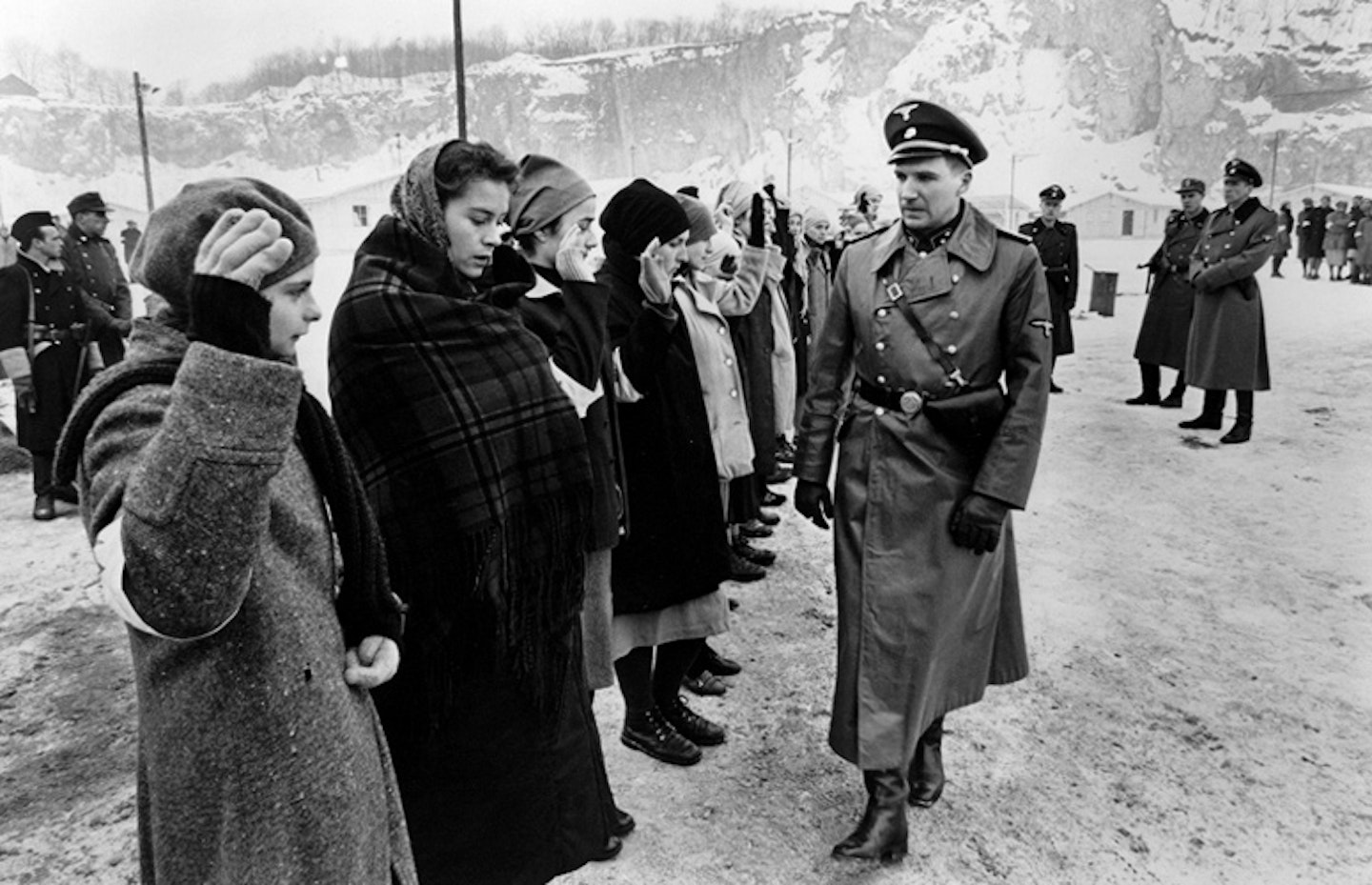
Love it or hate it, Life Is Beautiful isn’t the most realistic interpretation of the Holocaust. For one thing, it was surprisingly difficult to commandeer the stereo in concentration camps, as Schindler’s List (1993) (above) and a series of great documentaries (*Shoah *and Night And Fog, in particular) amply demonstrate. For another, happy endings were few and far between in the Final Solution. Steven Spielberg’s masterpiece hardly ends happily but does offer some hope in one shining instance of humanity – the salvation of the ‘Schindlerjuden’ by the otherwise cash-and-women hungry businessman Oskar Schindler – amid all the horror. The story is faithful to this grim period in Polish history, right down to overweight SS grotesque Amon Goeth (Ralph Fiennes), his regime of terror at Plaszow concentration camp and ultimate fate at the hands of the liberating Russians. Less fêted but also based on a true story is The Counterfeiters (2007), an Oscar winner that offers an even less probable survivor’s stories, and Agnieszka Holland’s Oscar-nominated In Darkness (2011).
1945
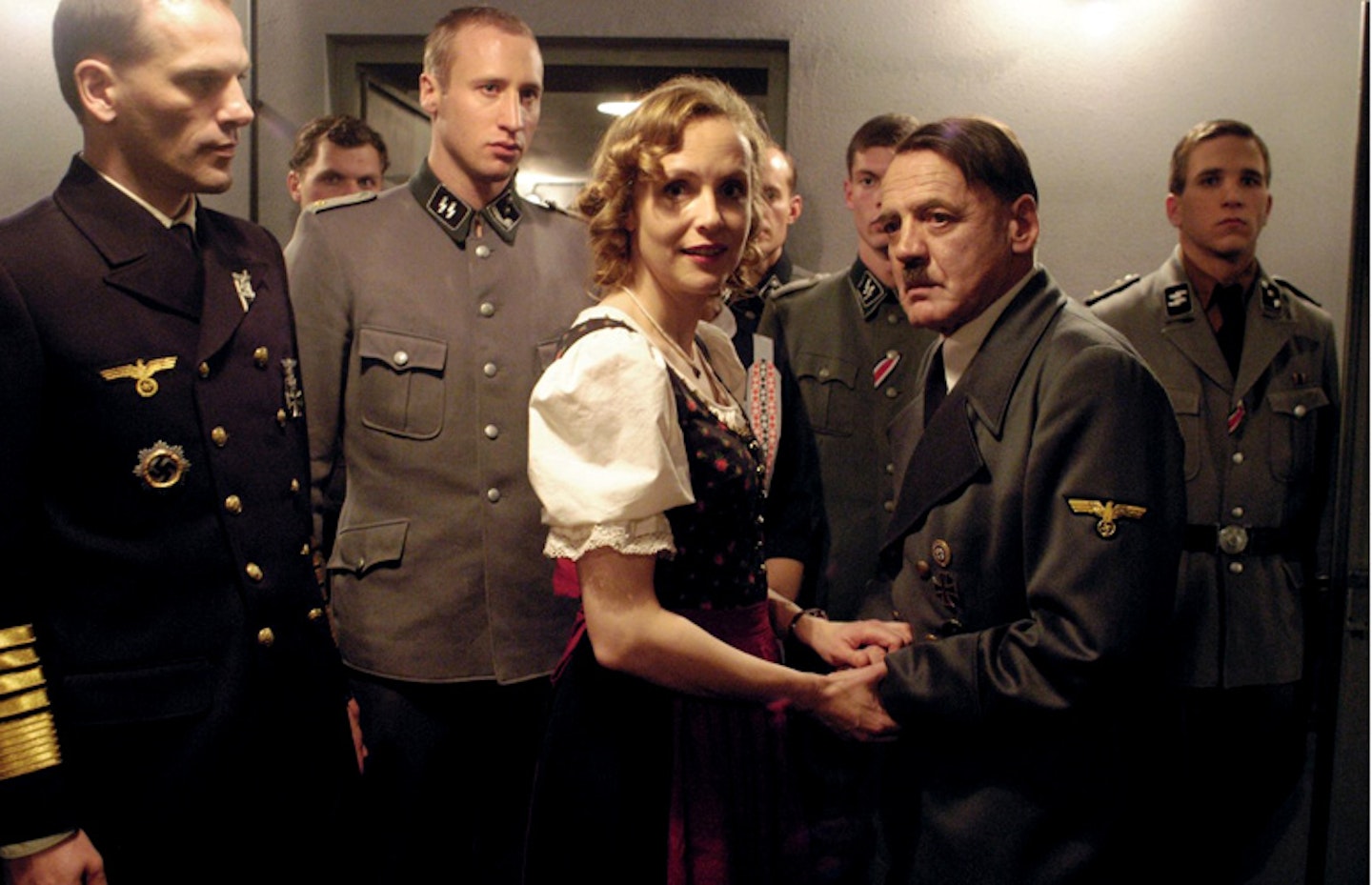
Ayer’s Fury aside, the final days of the Third Reich are tackled with an unsparing lack of sentiment in German film The Bridge (the 1959 version, not the TV remake). Hitler’s ‘total war’ edict is manifest in a group of teens heading straight from school to defend that titular edifice against the advancing Americans. In the process, they prove that double maths isn’t the worst thing in the world after all. As Brad Pitt’s Wardaddy points out in Fury, "a whole lotta people gotta die" before hostilities cease, and these kids – tragically, pointlessly – are among their number. Less sympathetic are the jumpy inhabitants of the Führerbunker – a kind of Panic Room for psychotic racists – in Oliver Hirschbiegel’s *Downfall *(2004) (above). It’s an stand-up piece of history that’s based entirely on eyewitness testimony. Included in Bernd Eichinger’s script are the recollections of Albert Speer, secretary Traudl Junge, and army officer Gerhard Boldt, who was on hand to record Hitler’s meme-friendly freak-out when a phantom counterattack failed to materialise.
The aftermath
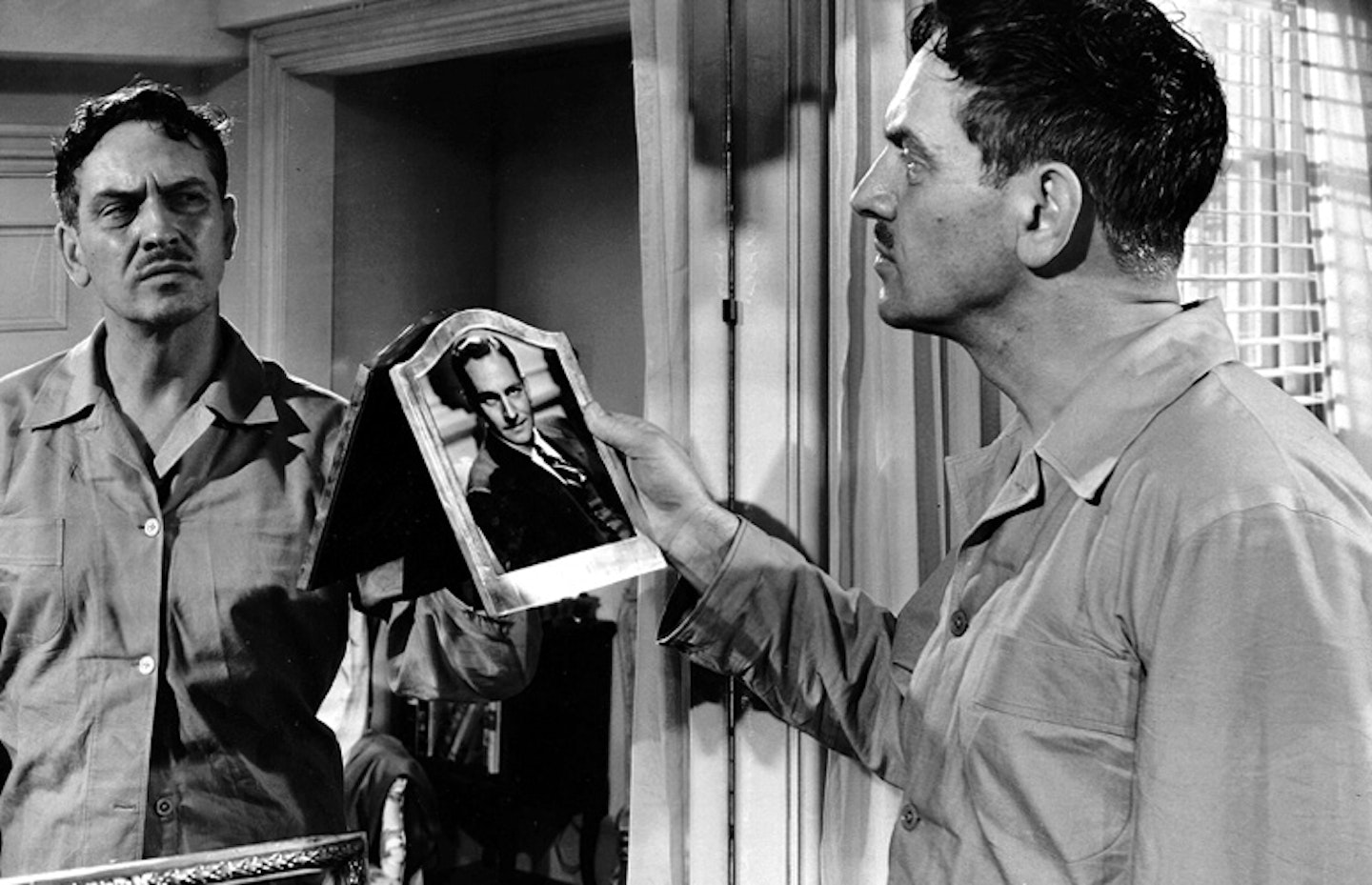
The scars of the war, visible and invisible alike, spilt over into an entire genre, film noir. But the best gat-free treatments of the war’s aftermath (excluding The Wolverine) include Roberto Rossellini’s Germany, Year Zero (1948), Nazis-on-trial courtroom drama Judgment At Nuremberg (1961) and perhaps less obviously, Paul Thomas Anderson’s The Master (2012). In terms of stressing the challenges of peacetime, the finest of the bunch is William Wyler’s The Best Years Of Our Lives (1946) (above). Gregg Toland’s deep focus lens follows three ex-servicemen picking up their lives in a Midwestern city in a narrative that highlighted the challenges facing demobbed soldiers on civvy street. It’s definitely worth another look, especially in these post-Afghanistan days.
